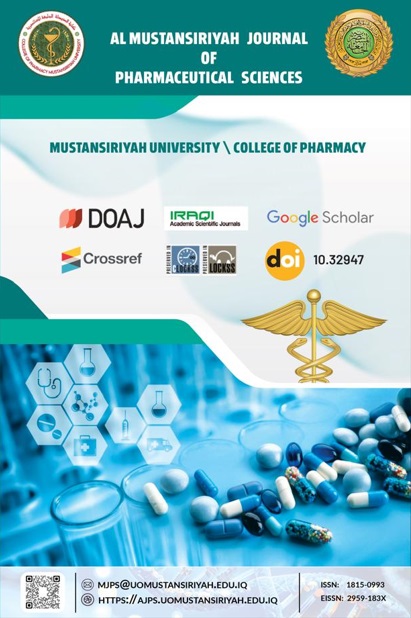Abstract
In oral applications, the microsponge system has been shown to increase the rate of
solubilization of poorly water-soluble drugs by entrapping such drugs in the microsponge
system\\'s pores.Because these pores are very small, the drug is in effect reduced to
microscopic particles and increased surface area thus greatly increases the rate of
solubilization.
This investigation was done to increase solubility and then bioavialibility of poorly
soluble ketoconazole (BCS class II drug) by preparing it as microsponges by quasi emulsion
solvent technique using different types of Eudragits as Eudragit E 100, Eudragit RS or
Eudragi tRL. Physicochemical interaction between drug and excipients as individual one,
physical mixture and prepared microsponge has been evaluated using Fourier transform
infrared spectroscopy (FTIR) and differential scanning calorimetry (DSC) which indicates the
absence of interaction between them. The1: 0.1 ratio drug: Eudragit E 100 at stirring rate of
2000 rpm (F1b) was found to give the best production yield of 80.46±2.41, entrapment
efficiency of 70.84%±1.71, and smallest particle size of 57.42±2.26 µm. Scanning electron
microscopy of F1b at magnification of 1000x and 50000x shows the presence of drug as
nanocrystals inside microsponge. All prepared formulas shows good flow properties indicated
the possibility of capsule formulation which show significant (P<0.05) high drug release
percent in 0.1 HCl compared with traditional Nizoral® oral tablet (83.15%±1.10) but Eudragit
E (F1b ) shows the best drug release percent of 100±0.91 at 20 minutes. Finally, the overall
obtained data revealed the feasibility of preparing fast release ketaconazole as microsponges
in oral capsules dosage form.
Key words: micosponag, ketocanazol, and quasi emulsion solvent technique.
solubilization of poorly water-soluble drugs by entrapping such drugs in the microsponge
system\\'s pores.Because these pores are very small, the drug is in effect reduced to
microscopic particles and increased surface area thus greatly increases the rate of
solubilization.
This investigation was done to increase solubility and then bioavialibility of poorly
soluble ketoconazole (BCS class II drug) by preparing it as microsponges by quasi emulsion
solvent technique using different types of Eudragits as Eudragit E 100, Eudragit RS or
Eudragi tRL. Physicochemical interaction between drug and excipients as individual one,
physical mixture and prepared microsponge has been evaluated using Fourier transform
infrared spectroscopy (FTIR) and differential scanning calorimetry (DSC) which indicates the
absence of interaction between them. The1: 0.1 ratio drug: Eudragit E 100 at stirring rate of
2000 rpm (F1b) was found to give the best production yield of 80.46±2.41, entrapment
efficiency of 70.84%±1.71, and smallest particle size of 57.42±2.26 µm. Scanning electron
microscopy of F1b at magnification of 1000x and 50000x shows the presence of drug as
nanocrystals inside microsponge. All prepared formulas shows good flow properties indicated
the possibility of capsule formulation which show significant (P<0.05) high drug release
percent in 0.1 HCl compared with traditional Nizoral® oral tablet (83.15%±1.10) but Eudragit
E (F1b ) shows the best drug release percent of 100±0.91 at 20 minutes. Finally, the overall
obtained data revealed the feasibility of preparing fast release ketaconazole as microsponges
in oral capsules dosage form.
Key words: micosponag, ketocanazol, and quasi emulsion solvent technique.
Keywords
and quasi emulsion solvent technique.
ketocanazol
micosponag
